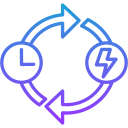Navigating Workforce Dynamics: AI and Human Synergy by 2025
The landscape of work is rapidly evolving as artificial intelligence becomes more deeply woven into daily operations across industries. By 2025, the interplay between AI and human talent is expected to reshape how businesses function, offering opportunities for enhanced productivity and collaboration. This transformation requires not only technological adoption but also an understanding of how humans and intelligent systems can work together harmoniously. As organizations and individuals adapt to these dynamic shifts, fostering synergy between AI capabilities and human creativity is set to become a defining factor for success.
The New Era of Human-AI Collaboration
Empowering Human Talent with AI Tools
By harnessing AI tools, employees in various fields are experiencing a significant boost to their efficiency and decision-making abilities. These smart systems can handle repetitive tasks, sift through large datasets, and uncover patterns that might otherwise remain hidden. As a result, professionals have more time to dedicate to creative problem-solving and strategic initiatives, allowing them to focus on the work that truly requires human insight. AI not only amplifies individual productivity but also enables teams to deliver better results, marking a shift toward more meaningful work experiences.


AI-Powered Decision Making
The integration of AI into decision-making processes introduces a new level of accuracy and foresight. Advanced analytics and predictive models help organizations anticipate market trends, customer needs, and potential challenges with unprecedented precision. By augmenting human judgment with AI-generated insights, leaders are equipped to make more informed decisions faster. This synergy reduces risk, increases agility, and fosters a culture of continuous improvement where both AI and human expertise drive organizational performance to new heights.

Transitioning to Hybrid Roles
The rise of hybrid roles, blending technical proficiency with domain-specific expertise, is a hallmark of the AI-driven workforce. Employees are now expected to work alongside intelligent systems, utilizing AI tools to enhance their core competencies. For example, marketers leverage data analytics platforms, healthcare professionals adopt diagnostic AI, and financial analysts use predictive algorithms to assess risk. This transition requires a willingness to learn and adapt, as well as a commitment to ongoing professional development. The emergence of these roles ensures that human intuition and machine precision coexist productively.

Upskilling and Lifelong Learning
To keep pace with evolving job requirements, continuous upskilling and reskilling have become essential career strategies. Organizations are investing in training programs that equip employees with both technical know-how and the ability to interpret and apply AI-driven insights. This culture of lifelong learning not only supports workforce agility but also empowers individuals to take charge of their own professional growth. As workers become more proficient with AI, they are better positioned to lead innovation and drive positive change within their industries.

Shaping Organizational Culture
Redefining roles extends beyond individual job descriptions—it also impacts the broader organizational culture. Companies are recalibrating their values to emphasize adaptability, collaboration, and an openness to technological transformation. Leaders who champion transparency and ethical AI usage foster environments where employees feel safe experimenting with new technologies and sharing their insights. The organizations that successfully nurture this culture of change will emerge as industry frontrunners in the age of AI-human synergy.
The Ethical and Social Dimensions
One of the major challenges in deploying AI systems is mitigating bias in decision-making processes. Since AI often learns from historical data, there is a risk that prejudices embedded in past practices are perpetuated or even amplified. Organizations must rigorously evaluate their algorithms, apply oversight mechanisms, and include diverse perspectives during the development and deployment stages. By prioritizing fairness and inclusivity, companies can ensure that AI-powered decisions fairly reflect the needs and values of their entire workforce and clientele.

